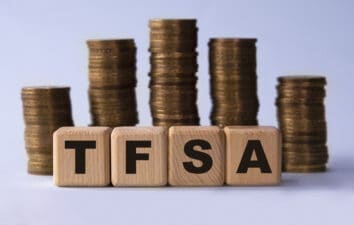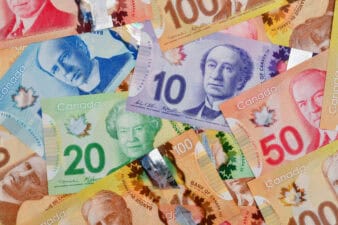After a short period of low volatility, uncertainty is beginning to pick up once again. A string of bad news has investors back on their heels, sending stocks down in one of the worst weeks since the beginning of the year. A rare sell signal on Chinese stocks, poor U.S. jobs data, and an increasingly dovish European central bank are just some of the negative news items to send investors running for the exits.
What is the average investor supposed to do in a rocky situation like this? After all, most people are still licking their wounds from the late 2018 stock market rout. Is this going to be another sharp downturn, and if so, where do you hide?
For more risk-averse investors who still want to keep their feet in the market, an appropriate option may be to invest in low-volatility exchange-traded funds (ETFs). Fortunately, there are a couple of options that might allow investors to sleep at night. Bank of Montreal has created two ETFs that might just do the trick: BMO Low Volatility Canadian Equity ETF (TSX:ZLB) and BMO Low Volatility US Equity ETF (TSX:ZLU).
Although there is a small yield provided by the stocks, investors will have to keep in mind that these are not big-income providers. At the current prices, ZLB has a yield of 2.5% and ZLU has a slightly lower yield of 1.7%. The dividends are paid out on a quarterly basis.
These ETFs have experienced steady performance over time. Since inception, ZLB has returned 13.38% on an annualized basis and has grown a cumulative 152% over the same time frame. ZLU has had an even better return, with an annualized 17.11% and cumulative 155.96%. While past results are no guarantee of future returns, these numbers are impressive, especially considering these are low-volatility stocks.
If you decide to invest in these ETFs, there are a few facts that you need to keep in mind. The first factor to consider is that while these ETFs are low volatility, they are not zero-volatility options. These are not bonds; the ETFs are only designed to smooth the ride for investors. Sometimes, every stock goes down no matter how stable.
These ETFs are also not the cheapest ones you can buy. The management expense ratios (MER) are expensive when compared to a pure index fund, although the fees are not unreasonable considering they are aiming to provide low-volatility returns. ZLB has an MER of 0.39% and ZLU has a slightly lower fee of 0.33%. When compared to a standard S&P ETF, like Vanguard S&P 500 Index ETF with an MER of 0.08%, the low-volatility ETFs can seem expensive.
The last point to consider is that both ETFs were initiated after the financial crisis and have essentially ridden the longest bull market in US history since that inception date.
Buying low-volatility ETFs is a good way for investors to participate in the stock market while reducing market volatility. As long as you are comfortable with the fact that these ETFs are slightly more expensive than pure index funds and that you will still experience a certain amount of volatility, they are an excellent way to ride out the turbulent times that might still lie ahead.








